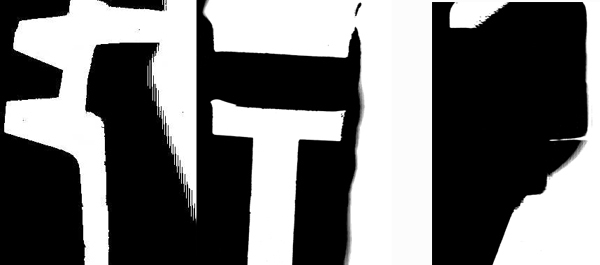Daphne Oram
After she left the BBC in 1959, Oram created her own studio at her house, Tower Folly, where she worked fervently for the rest of her life. She produced a wide range of vital and exploratory works throughout her lifetime, including the soundtrack to the horror film The Innocents (1961), the soundtrack for 'Snow', directed by Geoffrey Jones and her own compositions including 'Still Point' and 'Episode Metallic'. Oram was also a researcher with an avid interest in the science and philosophy of sound. Her book An Individual Note, a number of research papers, and her numerous lectures and presentations around the UK provide a fascinating insight into her perspectives on sound. After her death in 2003, composer and electronic musician Hugh Davies inherited her collected works and personal archives. After Davies's death in 2005, the collection moved to the Special Collections at Goldsmiths, University of London, where it is being accessioned and digitised. The exhibition is drawn from never before seen materials from the collection, detailing Oram's seminal works, her attitude and aesthetic towards sound and her correspondence with luminaries of her era. Exhibition curated by Tom Richards and James Bulley. Free entry |
Hugh Davies

|
Hugh Davies (1943—2005) was a British composer, performer, inventor,
and musicologist. One of the main activities in Davies's own work, which spanned over 40 years, was building and discovering new musical instruments, often consisting of salvaged materials, usually electronically amplified, and on which he improvised solo or as part of a group. This exhibition focusses on Davies's artifacts such as the Shozygs and the Springboards, which exemplify Davies's pioneering work in live electronic music and his radical understanding of music-making. The exhibition draws from resources including the Hugh Davies Collection and Archive, held at the British Library - where recordings and writings by Davies are housed - and his estate, presenting rarely and never-before seen, or heard, work. Exhibition curated by Settimio Fiorenzo Palermo
Hugh Davies' work 'Quintet' will be performed at the Live Electronics event on Saturday 22 September. More details here. |
|---|
Lawrence Upton
Lawrence Upton (b.1949) is a poet, graphic artist, sound artist and curator. He is the current director of Writers Forum, and recently finished his tenure as AHRC Research Fellow in the Music Department at Goldsmiths, University of London. He is now an Honorary Research Fellow.
In the mid 1970s, Upton served twice as elected Deputy Chairman of The Poetry Society (before resigning in 1978 on a matter of principle) and founded and ran a not-for-profit bookshop in the basement of the Society.
He has since published Bob Cobbing and the book as medium; designs for poetry (2008); and his book Commentaries on Bob Cobbing is forthcoming.
'Vust!'
By 2005, withdrawn from the metropolis for some years, he had explored a number of intermedia approaches, most notably Trachea with dancer Rory McDermott, using recorded and a capella voice, film and projections (Nottingham, 2003), but took none further. |
||||||||||||
Goldsmiths EMS

|
|
The Stanley Glasser Electronic Music Studios were established in 1968 by composer, instrument maker and musicologist Hugh Davies and comprise a suite of working areas for undergraduate & postgraduate students wishing to explore the creative potential of studio equipment & audio software in relation to composition, live electronics, interactive performance, sound-art, acoustic ecology and sonic research. Free entry |
|---|







